Unless someone comes up with a highly innovative alternative, connecting all those various components in our audiophile systems still requires the use of cables. Some people believe cables absolutely improve sonics, while others feel all cables are the same, with no discernable difference existing between any of them. What is true is that power cords, digital interconnects, analog interconnects and speaker cables have morphed from something on par with 1960s lamp cords to essentially priced like a component in their own right today. And oh, my, what they can cost…!
Is voodoo in play? Sadly, with some less than honorable audiophile cable companies, there is some dark maneuvering going on. The best cable companies, those worthy of consideration and investment, are looking for any and all ways to get your signal from Point A to Point B with as little influence from the cable as possible. The ultimate goal of a superior cable is to do nothing whatsoever to the signal – but this is much easier said than done in the real world.
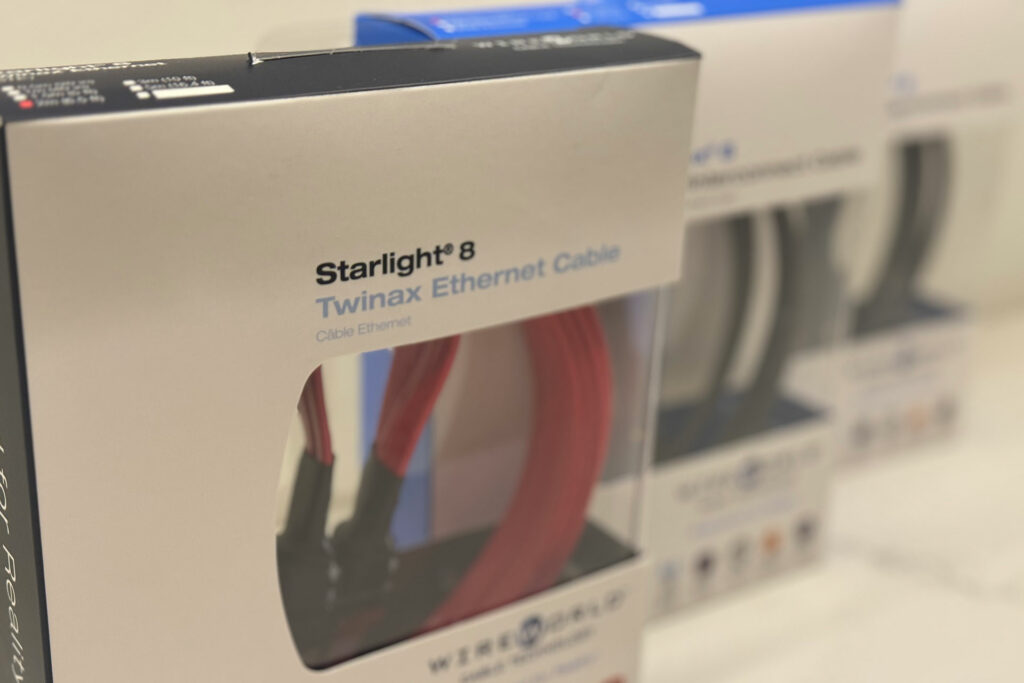
There are widely respected audiophile cables whose performance may yield a softer, more relaxed presentation, and others are very dynamic, if not bright or forward. Most audiophile cables fall pretty much in the middle of the audio spectrum and will deliver some noticeable sonic impact. And for any one type of cable, there are any number of brands all touting the same result – unquestionably better sonics.
What Are the Principal Metals Used in Cables and Why?
An overwhelming favorite, copper is the most-used metal used inside a cable to carry current. All cables will have the required number of copper conductors to move electricity and complete a circuit. The level of quality of the copper conductor is a byproduct of the smelting process. Copper mills will process copper to a predetermined level of purity. So, if a cable is advertised as being “four nines,” it means the copper is 99.99 percent pure. A purity level of six nines would be represented as 99.9999 percent and, in what are perhaps the most expensive cables one might purchase, seven and eight nines are not uncommon. It is generally agreed the purer the conductor (meaning more nines), the better the cable’s performance and the more it will cost.
Silver is the other principal metal used in cable construction. Silver, just like copper, uses the same purity ratings to identify the level of quality. Needless to say, silver is dramatically more expensive than copper. So, it is not uncommon for all silver conductors, and even a copper conductor clad with an overlay of silver, to be the most expensive money can buy.
So, which one should be used? Ah, that is the million-dollar cable question. Generally speaking, and in very general sonic terms, copper tends to have a lusher, more engaging, warmer type of sound, compared to silver options. Silver tends to sound faster (something very desirable in an audio system, especially speakers), have increased clarity and, many would say, portrays a more energetic, livelier type of sound. Bright or forward might also be a description of silver cables. Quite a few cable companies make their products with a base conductor of copper and an overlay of silver – the goal being the best of both worlds. Others make their cables all silver. And if you are thinking you could use a certain type of cable based on its presumed sonic portrayal, whether more dynamic like silver, or more relaxed like copper, with the intent to control or even correct sonic deficiencies, you’d be exactly right. In fact, this practice is done all the time. How well it actually works depends on the system, as well as the cable.

What Are the Standard and Most Popular Terminations on Cables?
Obviously, the most basic is a bare wire termination. This is more likely used when the cable is the aforementioned lamp cord. A very popular termination is a spade lug. A spade connector looks sort of like a horseshoe at the end of your cable. They are extensively used on speakers and on the back of amps and preamps.
So named for the Radio Corporation of America, “RCA cables” were originally designed in the 1940s to connect a phonograph to a radio. These cables are two conductors, one for the signal and one for the ground. Another name for RCA cables is “single-ended.” They both refer to the same type of widely-used termination. Today, RCA cables are used on audiophile tonearms, amps, preamps, integrated amps and audio sources in more budget-friendly systems.
Originally used in the professional audio world, an XLR cable is one with three conductors – three male pins on one end and three female pins on the other. Also called “balanced,” XLR is more commonly used for connections between devices, such as an amp to a preamp or a DAC to a digital source. They are designed to be used in systems with dual mono, balanced from input to output equipment. XLR is commonly used on better equipment with a resultant higher cost.
Banana terminals are almost always used for speaker cables. The connector has flexible strips of metal, which compress as the male connector is plugged into the female jack. One principal complaint is that these metal strips may fatigue over time and the connection will become compromised. To combat this, a “locking banana” terminal is a popular option. If you frequently change or move your speakers, a banana plug is a convenient speaker cable option. Stereo stores, for obvious reasons, love the flexibility this connection method provides.
Designed as a quick connect/disconnect, the BNC (Bayonet Neil-Concelman, for anyone interested) is predominately used with coaxial cables and designed to carry an audio signal over mostly short distances. The male and female connectors utilize a twist lock design to prevent becoming disconnected. BNC was originally designed for military communications gear in the 1940s. It is not uncommon to see a simple BNC to RCA adaptor used in some audiophile setups.
Some other types of cables with unique terminations are ethernet cables used in computer audio applications, USB cables used primarily in digital applications, optical cables, and the video-oriented HDMI cables designed to carry both a video and audio track on one cable.
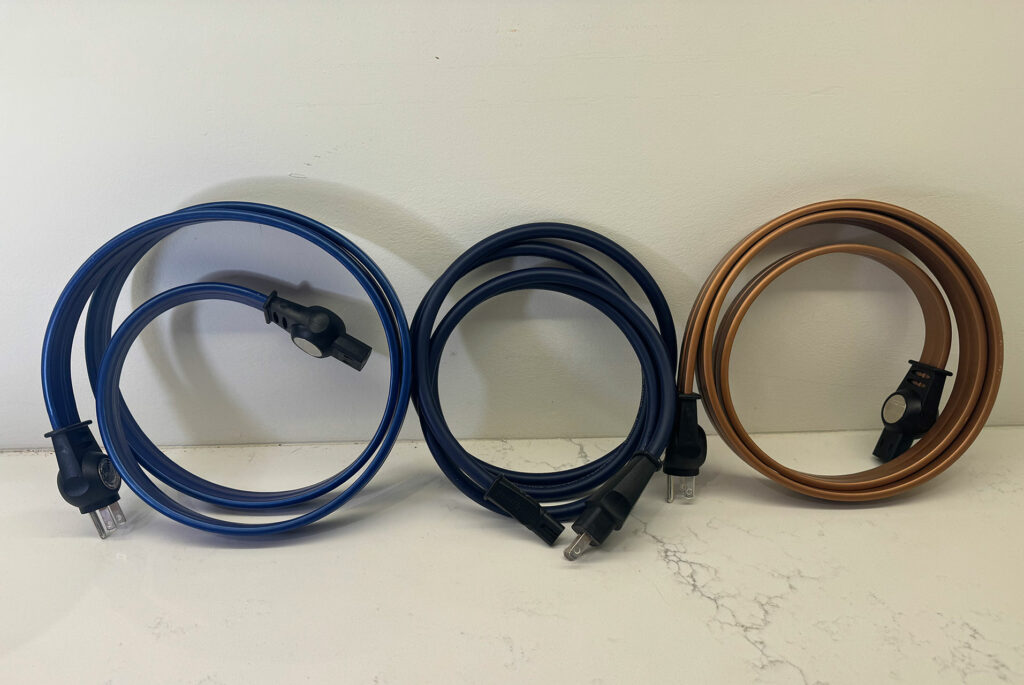
Deciding the Level of Quality of Cables in an Audio System
Because cables range in price from very inexpensive to insanely expensive (prices for speaker cables can be as much as an eye-popping $80,000, depending on manufacturer), it is always a good idea to match the cables to the cost and quality level of your system. It is highly doubtful anyone would really use $100,000 worth of cables on a $5,000 system. And just as almost nobody would ever put four “el cheapo” tires on a Ferrari, those with a world-class, best-of-the-best audio system in search of the finest possible sonics will likely select the upper tier of audio cables. Very often, they will be highly expensive. Naturally, the question becomes, are they worth the cost?
How to budget for an entire cable loom is a very personal matter. Some people stick with simple, low-cost copper wires, which is a supportable argument. Other audiophiles chasing the nth degree of performance often look to more exotic cable designs, materials and terminations. You need to match your sonic goals and your overall budget with the cable’s design parameters and total cost. While there are some obscenely bad, poorly-designed audiophile cables on the market – there are also engineers working tirelessly to bring the listener better sound and increased value proposition, all designed to get you closer to your musical source.
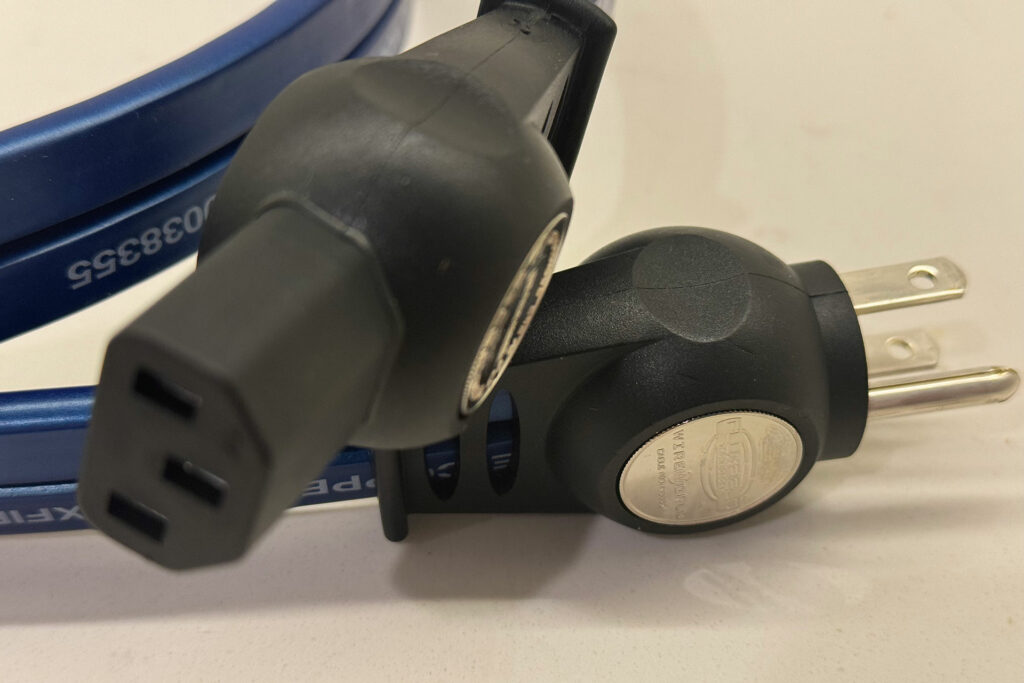
Which Audiophile Cable Should I Use for Which Application?
It should be noted that no audio cable will improve sound. They will only do less harm. So, it follows, the better and likely more expensive the cable, the less harm it will theoretically do when transmitting a signal from Point A to Point B. It is primarily for this reason that some cable products perform better than others. The goal of any cable in an audio system is for the signal to leave the cable exactly as it entered. Unfortunately, that doesn’t happen, as physics gets in the way.
Many cables, regardless of the application, have their own unique sonic signature. Many audiophiles spend considerable time and effort in matching a cable product with a speaker system (or other application) in the hopes of an improved outcome. That’s a slippery slope, however, because of the very real possibility of getting lost in the hard-to-measure world of small cable differences. For those using room correction, this becomes even less relevant. While we’ve determined that almost all cables have a “sound” to some degree or another, seeking any cable in your system with a pleasing yet neutral presentation is always a wise goal. You likely can’t spend unlimited amounts of money on cables, so your budget is similarly a limiting factor. Cables can change the tone and timbre of an audio system, but it does not mean an exhaustive and expensive effort should be made doing so. Speaker placement and room correction are two ways that a commensurate level of improvements may be made with existing cables. Seek the best cables you can justify and those which sound best on your system. They should be as neutral-sounding as possible, thus the “do no harm” rule is fully in place here.
Most of today’s audiophile speakers will accept a variety of terminations – spade and banana being the most popular. Sometimes it is necessary to connect two sets of speaker cables. Most commonly done on the amplifier, connecting a set of floorstanding speakers and a subwoofer (one or a stereo pair) may mean two or perhaps more cables under each terminal. Using both spade and bananas may make connecting everything much easier.
Speaker systems with two sets of binding posts have the option of bi-wiring. This is a process using two speaker cables rather than one. One set connects to the top terminals and the other to the bottom terminals on each speaker. When bi-wiring, it is absolutely essential to remove the jumpers between the top and bottom terminals to avoid blowing out any or all of the drivers and/or the crossover.
In simple terms, when bi-wiring, one set of cables controls the tweeters and the other set the woofers. Dividing the signal in this way normally yields an improved sound. Of course, doing so will likewise mean two sets of identical speaker cables and the resultant increased costs. There are also versions with multiple terminations specifically designed for bi-wiring. Some inventive audiophiles will use a cable with excellent low-frequency performance for the woofers and similarly employ a different cable with excellent characteristics for the highs. While some audiophiles feel bi-wiring is a highly worthwhile practice, others do not. And not all systems or speakers will even allow this connection method.
For analog equipment, such as audiophile amplifiers, stereo preamps and phonostages, there are really only two mainstream choices – an analog interconnect with RCA or XLR terminations. In most cases, RCA will be used with equipment that is not dual mono (or identical left- and right-channel circuitry in one component) and balanced from input to output. If your amp, preamp, integrated or any other component only has RCA jacks on the back, it is not balanced and XLR terminations cannot be used. There are other connectors like Camac or Fisher (used on Mark Levinson and Cello gear of the past), but those are really obscure and very unlikely to cross your path in your audiophile journey.
Some companies put XLR connections on the back of a component, even though the component itself is not dual mono or balanced. If dual mono architecture is questioned, check the literature for that particular component, and look for phrases like dual mono, fully-balanced, or balanced from input to output. You can even try a Google Images search for the component and look for a picture of the component with the top off (from the top down). If you see identical parts on the left and the right, and some sort of a divider between both halves, you probably have a dual mono, fully-balanced component. Otherwise, the component is likely not balanced and not dual mono. Even if an unbalanced component has an XLR connection, using this type of cable won’t bring about any measurable benefit. And since XLR might actually cost more than RCA, the lesser-cost cable is probably sufficient and will deliver a perfectly acceptable connection.
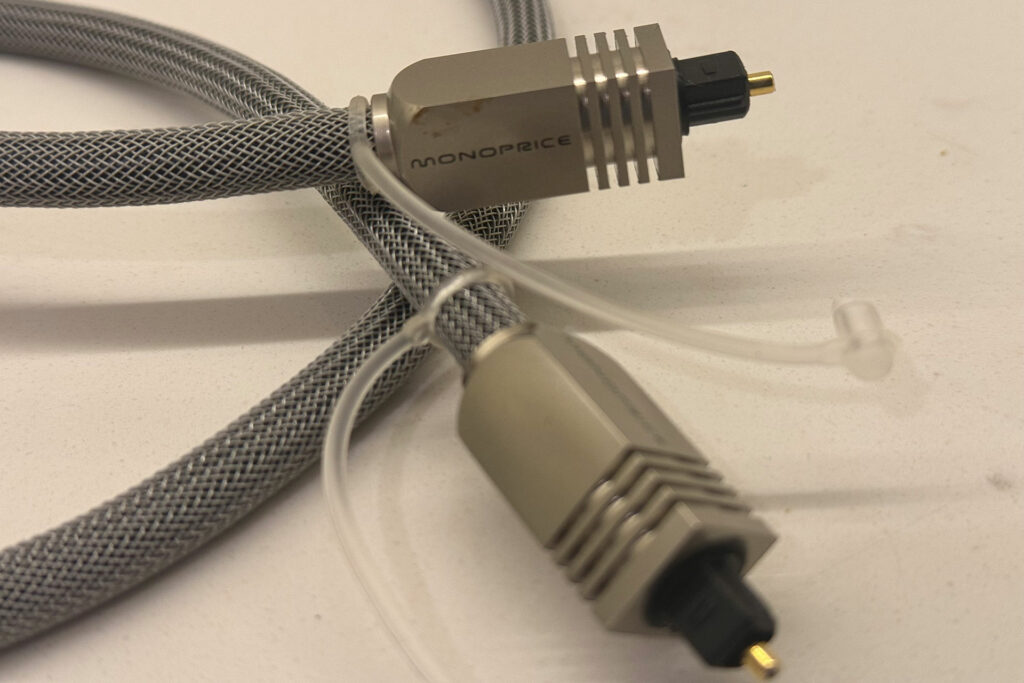
What About Digital Cables?
Two common digital cables are S/PDIF (Sony/Phillips Digital Interconnect Format) and USB (Universal Serial Bus). Digital cables transmit packets of digital information, and likewise, more efficient packet transfer delivers better sonics. S/PDIF is a 0.5V, 75-ohm cable with an RCA type of connection method. Depending on the geometry of the cable, increased levels of jitter to the digital signal may be introduced.
USB is another very popular method to transmit a digital signal. Originally designed for computers, USB has the capability to transmit data in both directions, or forwards and backwards. Over the years, the evolution of USB in terms of speed has continued to evolve. What started simply as a USB cable has become an extended variety of speed capabilities and connection methods. There are USB-A, B, and C with mini and micro terminations. There is also an ever-expanding assortment of data transfer speed capabilities, such as USB 1.0, 2.0, 3.0 and 4.0. Frankly, digital is changing so quickly that the USB protocol will continue to evolve and provide better and faster performance. It may be necessary to download a driver to a particular device to allow USB to be recognized. Refer to the component’s user guide to find out if this applies to your system. It is always a wise practice to keep up to speed with your gear to make sure you are getting the most from your connections.
AES/EBU (Audio Engineering Society/European Broadcasting Union) is considered by most to be a professional-level digital cable and one whose performance yields the highest level of sonics from a digital source to a DAC. AES/EBU is a 5V, 110 Ohm cable and is designed to move more data with less loss of signal. It works especially well where long cable lengths are required. In fact, if an amp and the speakers are in a separate location than the rest of the system, the preferred practice is to use long interconnects and short speaker cables.
Because AES/EBU has such long length efficiency with low signal loss, it is an ideal application for this connection method. Because AES/EBU is so efficient in moving digital packets of information with little loss, it adds exceedingly low levels of increased jitter. AES/EBU are always terminated with male and female XLR connections.
Coaxial, or “coax,” cables are probably most widely used as the line from outside the home to a cable TV box inside. They are also used in home theater applications where a video and audio signal are both being controlled by an AV processor. In two-channel applications, coax is very often found on CD players on the “digital out” connection and may allow a CD player to be used as a transport and connect to an external DAC. Unlike the cable box, coax cables in two-channel audio applications are almost always terminated with an RCA connector.
Lastly, there are optical cables. More commonly referred to as TosLink, a trademarked name of Toshiba of Japan, they transmit a signal not by an electrical conductor, but rather by light transmitted through a plastic or glass tube. TosLink is a very widely-used connection across many digital components. However, because it is an optical cable as opposed to electrical, it has far less bandwidth than its electrical counterparts. In fact, TosLink bandwidth may not be much above 6MHz, whereas an electrical version may have a bandwidth of 500MHz. In addition, TosLink tends to add distortion to the musical presentation and negatively affects imaging. Of all the cable connections, TosLink is widely considered by most audiophiles as the worst available means to transmit a digital signal, whereas AES/EBU is the best.
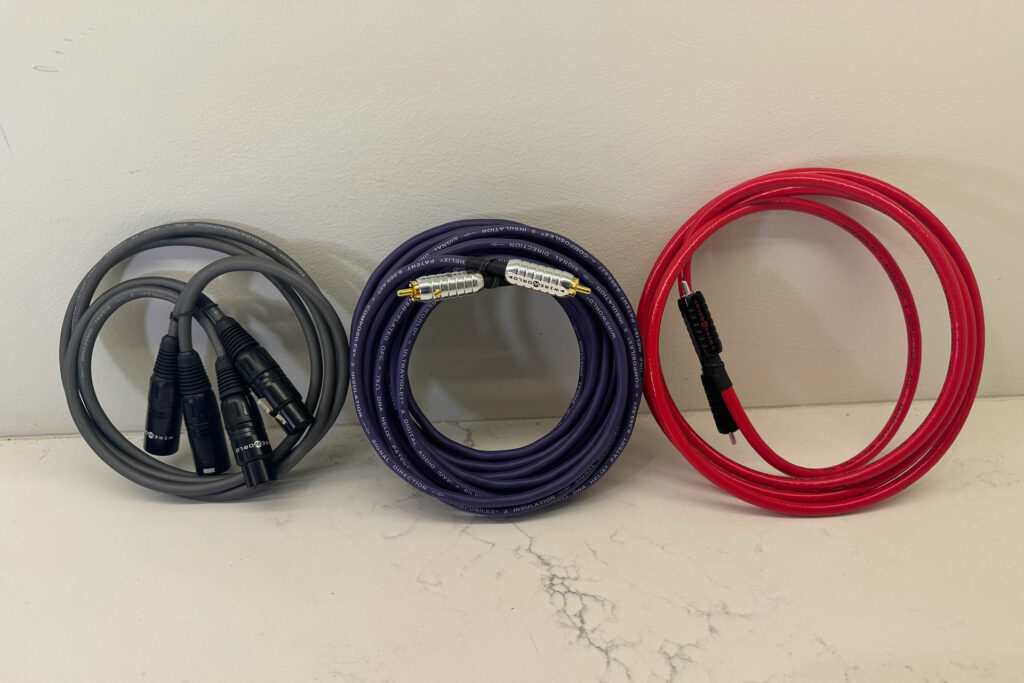
Why Are So Many Audiophiles Fixated on XLR Connections?
One attribute all audiophiles want is less noise in their signal path. Called “signal to noise ratio,” or SNR, the more noise in the circuit, the lower overall quality of sound the system will produce. It is important to remember that all cables, regardless of how they are made or how much they cost, tend to act as antennas. Our audio rooms are also realistically full of all kinds of various signals – WIFI, Bluetooth, cell phone, radio, TV – you name it. Static electricity from a carpet may be picked up by a wire directly laying on the floor. You can see how having a well-shielded cable isn’t as much nonsense as it is solid physics.
When a cable picks up external interferences, a two-conductor, unbalanced RCA configuration will transmit the signal directly to the system which increases distortion, thereby worsening the SNR. In balanced systems, using three-wire XLR cables, two wires carry audio signals and one the ground. The two current-carrying conductors will have the same signal, but one conductor will be 180 degrees out of phase with the other. Any external signal picked up by a wire will be transmitted identically across both wires – same signal in the same phase.
Common Mode Rejection is an electrical design term, meaning any identical signal, carried by a cable with the same phase across both conductors, will be eliminated. Only the differential signals, each one out of phase with the other, will pass in a balanced circuit. For this reason, balanced circuitry and three-wire XLR terminations are considered by most audiophiles to yield lower levels of noise, less jitter, and consequentially superior sonics. For Common Mode Rejection to work, both the cable and the equipment must be balanced.
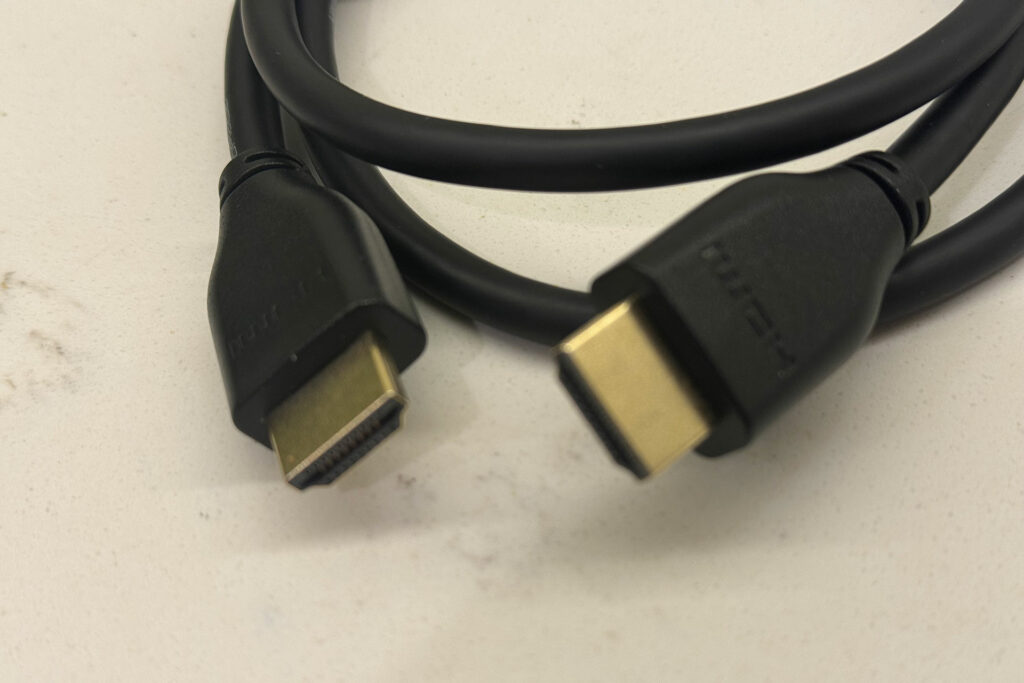
What Is a Dielectric and Why Does It Matter?
Also called insulation, the dielectric is the part of the cable protecting individual conductors. The dielectric is also somewhat accountable for the overall outside diameter of the cable. Most importantly, the dielectric is intimately responsible for the quality of the sonics the cable will render.
Dielectric absorption is a condition whereby the insulation absorbs energy (aka noise) and releases it back into the conductors, often at a slight delay in time of the signal itself. This absorption effect can noticeably degrade the sonic capability of the cable and therefore the system. Lesser expensive cables will use dielectric materials, such as rubber or PVC. Better cables will use better materials to thwart dielectric absorption and thereby increase performance. On the better scale are materials such as polyethylene. Among the best materials are polypropylene and Teflon. Oddly enough, the best dielectric material is air.
Because of the dielectric layer and the outer jacket covering everything, some cables can be so thick in their overall outside diameter that they become very difficult to manage. A one-inch-thick speaker cable may be quite difficult to snake through a rack for amplifier connections or connect to a speaker. Having increased thicknesses of the outer jacket and insulation may help with sonics, but it also may mean significant difficulties in physically routing this throughout an audio system.
And of course, there is the issue of cable clutter. One popular term is “rat’s nest” to describe how cables may look behind an audio rack. This term certainly applies to the behind-the-scenes appearance of my system. One option is to neatly run cables around the audio rack, which will make things look much nicer. It may also mean longer cables, which may increase cost. Another possible detriment is when interconnects and power cords touch when running parallel to each other. In this case, depending on the dielectric of the cable, it is possible for the electrical signal in the power cord to bleed into the interconnect, thus negatively affecting SNR. It is always wise to be sure no two cables touch, or if they do, only at 90 degrees. All of these issues may make nice, neat and tidy cable management very difficult.
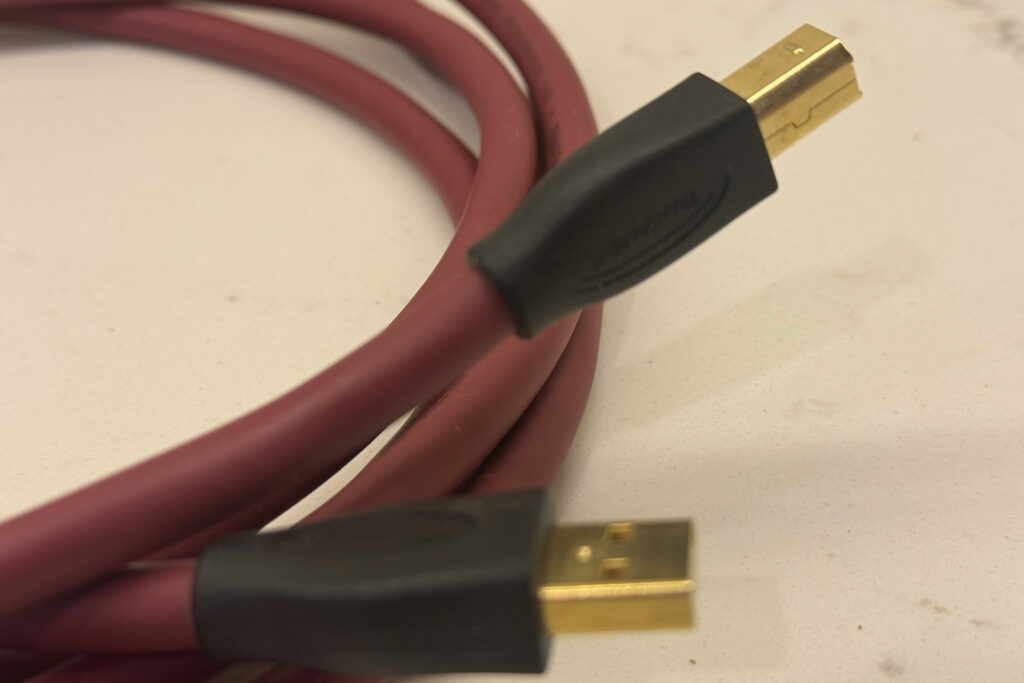
Final Thoughts for This Primer About Audiophile Cables…
In this article, my goal was to briefly introduce various cable types, how they work (to a point), and the differences between them. There is an undeniable, ongoing debate about the veracity of why cables are so prohibitively expensive, and if any sonic quality at all is a result of such increased prices. It is part and parcel of the cable mantra.
Cables are a wildly debated topic in the audiophile community, with nearly polar-opposite opinions on what does and does not matter. Some audiophiles believe fervently in the notion that better cables produce better sound. Others tend to be drawn to cables with built-in equalization networks. Others still think such notions are hogwash and try to keep their cables as pure, simple and faithful to the source as possible. One thing is for sure, cables are a necessary part of an audio system, thus you can’t make sound without them. You are going to need to make a decision as to where you stand on cables from day one. We recommend you consider affordable deigns consistent with your system. Also look for cables with superior shielding and that are well-made in terms of their connections. Additional levels of complexity, exotic materials and advanced manufacturing techniques come with more expensive cables. Getting into the high end of cables is a big-dollar game and, for my system, it was well worth the expense. For others, however, such a significant investment might not make nearly as much sense. Again, trust your ears as well as your instincts, and invest from a more logical position.
Personally, I believe cables matter in superior audiophile systems. I believe in using the best-performing cables I can find and afford. However, I also believe it is a wise practice to use cabling consistent with the system and its concomitant level of sonic quality. A $5,000 stack of electronics does not need $50,000 worth of cables. Likewise, a $500,000 system likely needs something significantly better than cables procured from the electronics aisle at Home Depot – regardless of what the forum folks say. Some cable manufacturers employ a variety of marketing gimmicks, all intended to make their products more appealing. Be sure you understand exactly what any cable product under consideration will provide for your system. Don’t get fooled into thinking a cable company’s slick ad campaign will yield better sonics.
My suggestion for audiophiles at all steps of their journey? Find out for yourself. Do additional research on the subject of cable design and construction and become even better informed. Talk to audiophile friends, who will provide trustworthy opinions. Work with a local dealer, who may allow you to borrow a demo set of cables and see if they deliver any improvements in your system. And if you discover sonic improvements from better cables, regardless of the price, your efforts will constitute a wise choice. Cables are a basic requirement in an audio system. Be sure to choose those you can afford and ones delivering the best sonics for the price. And then relax, sit back and enjoy the music.




Good article, covers the basics and the different schools of thought on cables. And, more importantly, try for yourself, the best advice ever, that’s what I tell anyone who asks, the debate is hot you don’t have to determine who is right, just try it for yourself.
Bryan many thanks for such a nice comment.
Happy Listening!
Paul
Thanks Bryan!
Informative article. But you omitted one thing that is not part of your cable discussion–the IEC connector for power cables. I’ve found that most power cables do not connect snuggly to gear. These connectors are 3rd party purchases that don’t meet specs. It seems like manufacturers of both power cables and connecting gear would be concerned and would do something about poorly-fitting IEC connectors. Shunyata has. They do sell neat plastic shims that fit inside the IEC receptacle box on the back of signal receiving gear. These are neat and really snug up lose power cables.
“So, which one should be used? Ah, that is the million-dollar cable question. Generally speaking, and in very general sonic terms, copper tends to have a lusher, more engaging, warmer type of sound, compared to silver options. Silver tends to sound faster (something very desirable in an audio system, especially speakers), have increased clarity and, many would say, portrays a more energetic, livelier type of sound. Bright or forward might also be a description of silver cables. Quite a few cable companies make their products with a base conductor of copper and an overlay of silver – the goal being the best of both worlds. Others make their cables all silver. And if you are thinking you could use a certain type of cable based on its presumed sonic portrayal, whether more dynamic like silver, or more relaxed like copper, with the intent to control or even correct sonic deficiencies, you’d be exactly right. In fact, this practice is done all the time. How well it actually works depends on the system, as well as the cable. ”
nonsense.